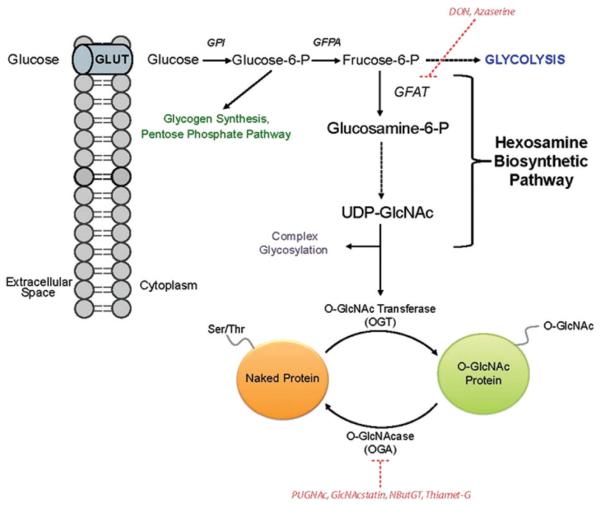Figure 1.
The HBP and the O-GlcNAc Modification. The majority of glucose entering the cell is used in glycolysis, glycogen synthesis or the pentose phosphate pathway. However, a small portion is shunted into the HBP, whose end product is the nucleotide sugar donor UDP-GlcNAc. UDP-GlcNAc serves as a donor for several downstream events, including the synthesis of other nucleotide sugar donors, complex glycosylation events and the post-translational modification of nuclear and cytosolic proteins with O-GlcNAc. OGT is responsible for the enzymatic addition of this sugar moiety to the hydroxyl groups of serine and threonine residues, whereas OGA is the enzyme that removes the PTM. Altered flux through the HBP is one mechanism of attenuating O-GlcNAc cycling that influences numerous molecular events in the cell. Both GFAT and OGA inhibitors are highlighted in red and indicate the stage at which they function. (see colour version of this figure at www.informahealthcare.com/bmg).

